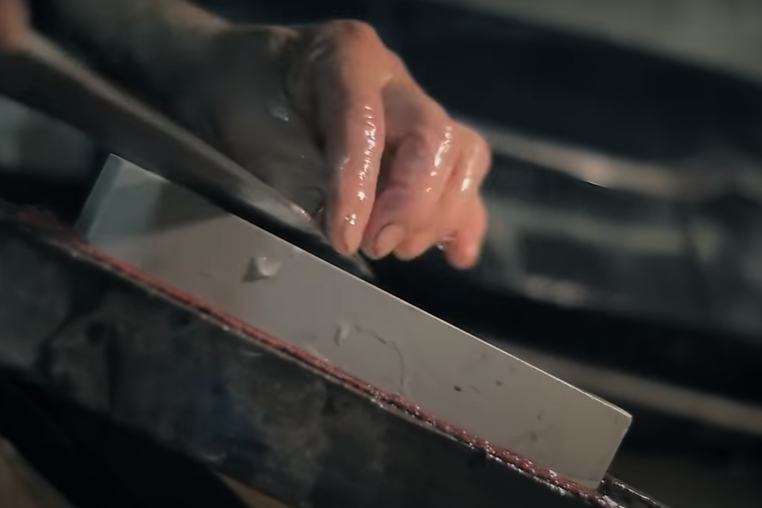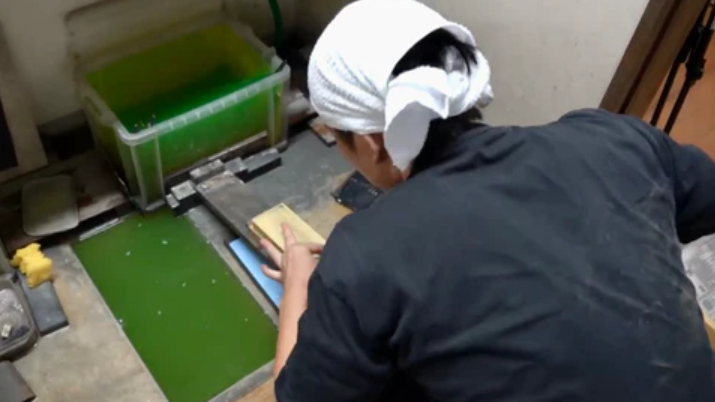
-
Knife Sharpening Techniques and Grit Selection for Whetstones: Basic Steps and Considerations
-
JULY 14, 2023
-
Learn the fundamentals of knife sharpening techniques and how to select the right grit for whetstones with this guide, which covers basic steps and key considerations.
-
Selecting the Right Whetstone Grit
-
The process of achieving a sharp knife starts with choosing the correct whetstone. The grit of the stone influences the sharpness and polish of your blade:
-
- Rough Stones (240-600 Grit):
Suitable for repairing damaged edges or creating a new edge. These stones remove material quickly and efficiently.
- Rough Stones (240-600 Grit):
-
- Medium Stones (800-2000 Grit):
Ideal for refining your blade's edge. This range of grit smooths out the roughness left by coarser stones and prepares the edge for final polishing.
- Medium Stones (800-2000 Grit):
-
- Finishing Stones (3000-8000 Grit):
Used for achieving a mirror-like polish and an exceptionally sharp edge, ideal for precise cuts.
- Finishing Stones (3000-8000 Grit):
-
Remember, grit numbers might vary between manufacturers, so it's important to follow the guidelines specific to your whetstone brand.
-

-
Step-by-Step Knife Sharpening with a Whetstone
-
1. Assess Your Blade:
Before sharpening, inspect your knife for any chips or nicks to ensure a smooth edge. -
2. Soak or Wet Your Stone:
Water acts as a lubricant, reducing friction and preventing heat build-up that can damage the knife. Ensure your stone is adequately moist, whether soaked or wet during use. -
3. Find Your Angle:
The angle between your knife and the stone is crucial for effective sharpening. Typically, this is between 20-30 degrees, but it can vary based on the knife and personal preference. Consistency in maintaining this angle is key. -
4. The Sharpening Motion:
With gentle pressure, glide your knife back and forth over the stone, maintaining your angle. Use smooth, even strokes for the best results. Flip the knife periodically to sharpen both sides evenly. -
5. Clean and Dry:
After sharpening, rinse and dry your blade and whetstone to ensure they are clean and ready for next use.
-

-
Personalizing Your Sharpening Technique
-
While these steps offer a basic approach, the optimal sharpening technique may vary based on the chef’s style, knife material, and blade shape. Adjust as necessary to find the method that best suits your needs, ensuring your knives are always in top condition.
This guide aims to not only maintain your tools but to enhance your skills in the kitchen. A well-sharpened knife improves the cooking experience, making every cut a reflection of your culinary expertise.

Sharpening Knives
We aim to introduce our customers to a knife sharpening guide to help them maintain the sharpness of their knives and prolong their enjoyment of cooking. Our hope is that our customers can savor the pleasure of using knives while enhancing their culinary experiences even further.

Before You Start Sharpening Knives
In this section, we will cover essential knowledge for anyone who sharpens knives. By keeping these points in mind, you'll find it easier to address any questions or issues that may arise during the sharpening process.

Blog Author: Toru
-Professional background-
・Graduated from Tokyo Sushi Academy
・Sushi lesson instructor at Tsukiji Tokyo
・Making sushi at RC Show, one of Canada's largest Toronto food shows
Traditional Japanese knives, like those from Sakai City, are globally prized for their sharpness and elegance. Yet, Sakai's dwindling artisans pose a challenge to preserving this craft. To combat this, I'm dedicated to spreading the brilliance of Japanese knives worldwide. My dream is to sustain Sakai's legacy while meeting global demand.

Would you like to experience the sharpness of handcrafted knives from Sakai City, used by 98% of Japanese chefs?
With our exclusive partnership with Shiroyama Japanese Knife Manufacturing, we offer top-quality knives, free Honbazuke, a protective Saya, and after-sales services for long-term confidence.
KIREAJI's Three Promises to You
-

1. High-quality Japanese Knive
We offer knives crafted by craftsmen from Sakai City.
-

2. Genuine Sharpness
To ensure you experience sharpness, we provide a free Honbazuke by our skilled craftsmen.
-

3. Lifetime Knife Use
Every knife comes with a free Saya(Sheath) for durability. We also provide paid after-sales services with Sakai City Japanese knife workshop.





